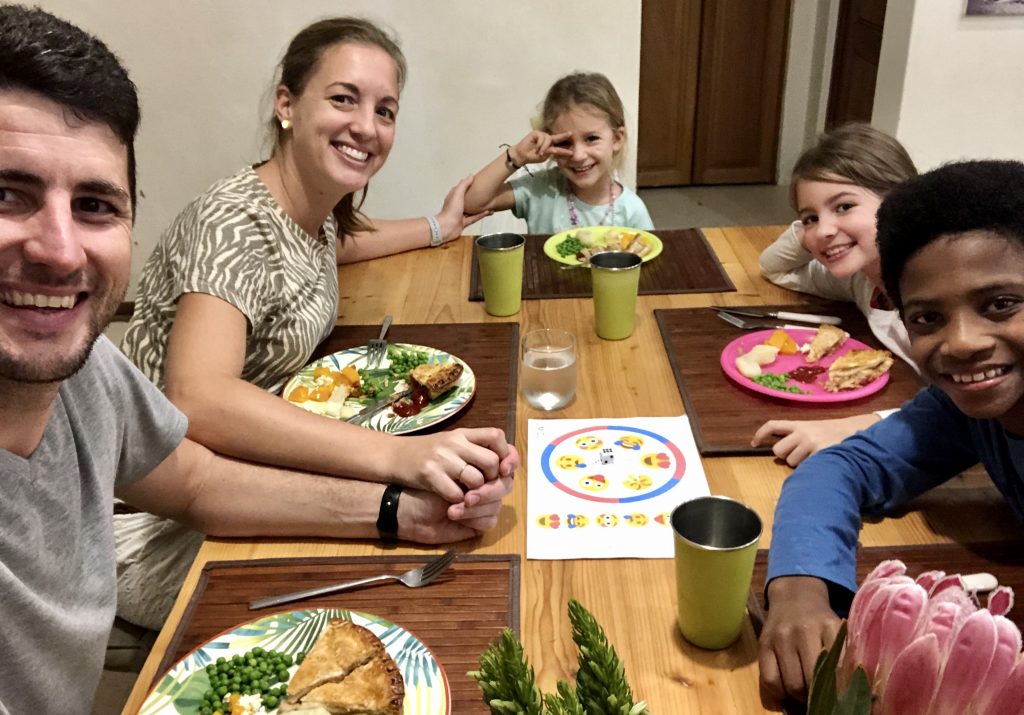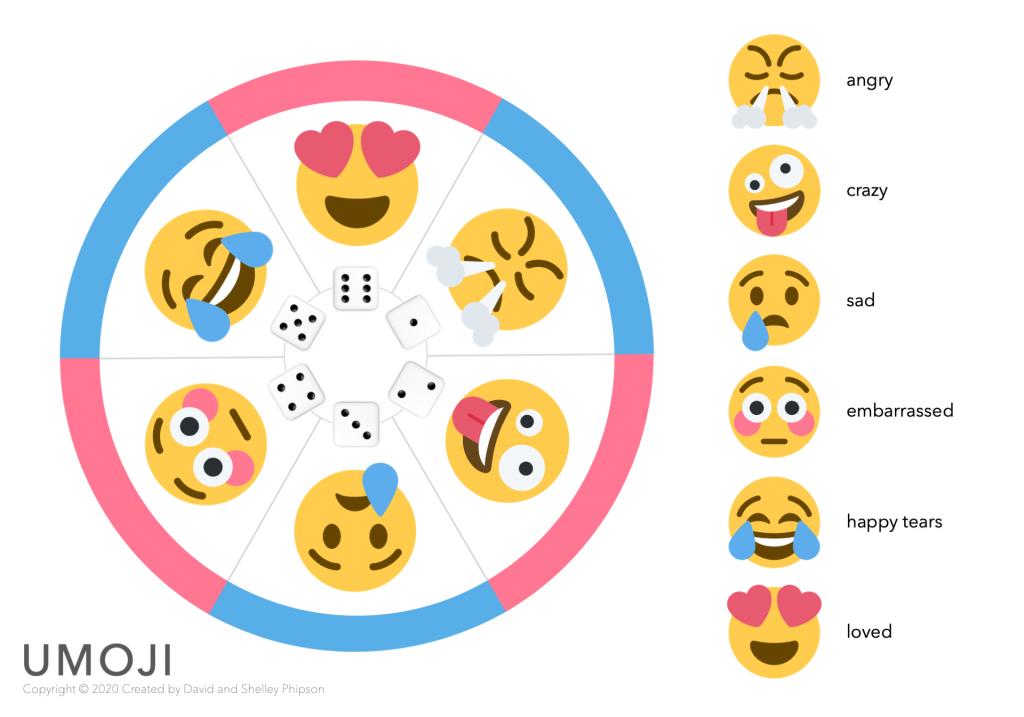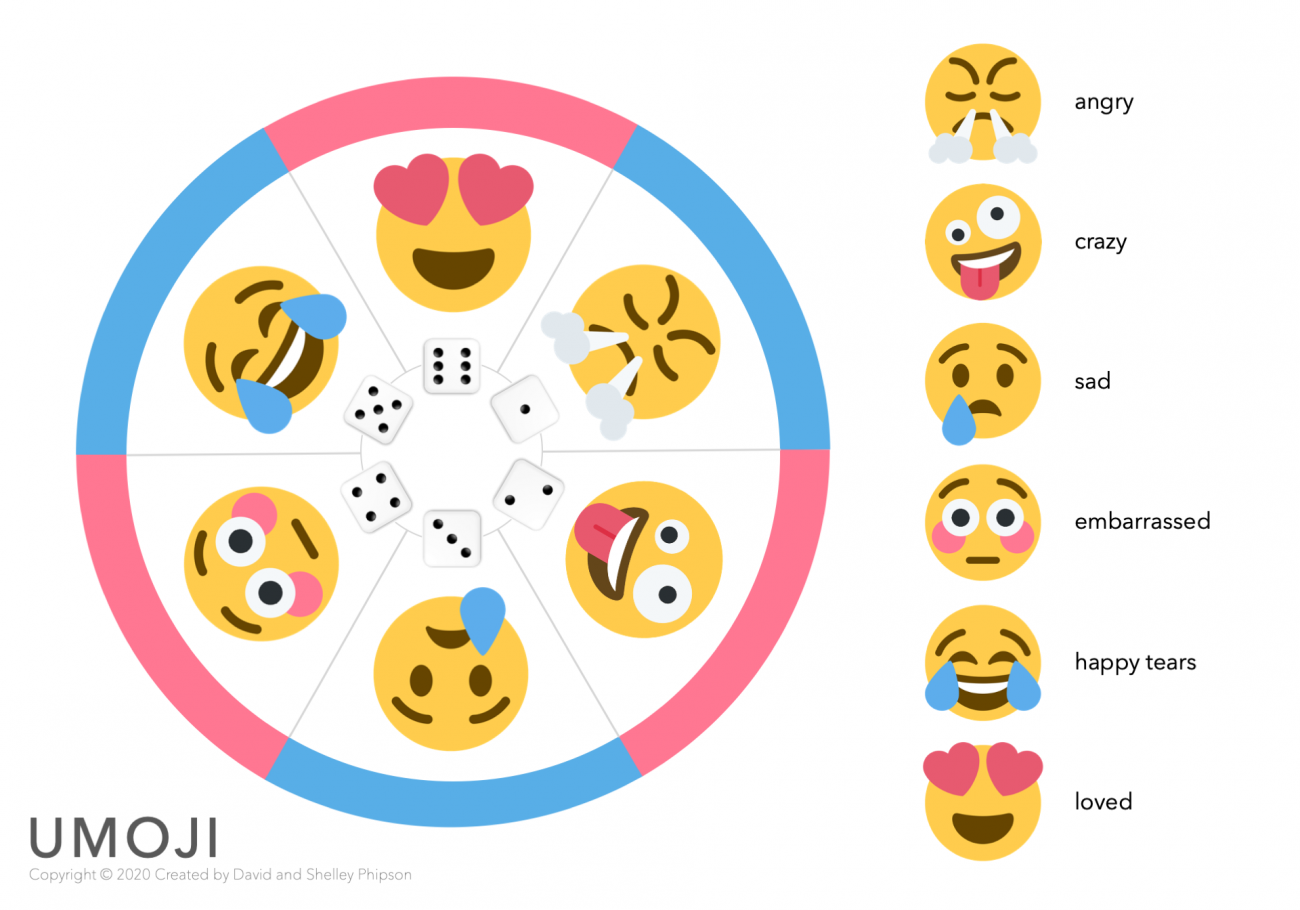UMOJI is a safe and fun way to learn more about the feelings and emotions of others. This is the communication challenge we set out to solve…
Disclaimer:
My wife and I have been sitting on this personal project for a while. It ties in so well with the theme of this assignment, so I have shared part of our design process in the hopes that others will find it helpful too…
Let’s start with some CONTEXT…
My wife Shelley and I live in South Africa with our three young children: our son (Caleb), who is 11 and our two daughters (Sophia and Emily), who are 8 and 5 respectively.
Like many parents of young children, we find it challenging to understand how our children are feeling, how they are experiencing the world around them. This is a definite communication challenge, one that is unlikely to get easier as our children grow older and their life experiences become increasingly complex.
Meet the PEOPLE…
This learning experience is aimed at our entire family, not just our children. There are obstacles to clear communication on both ends. We are the PEOPLE taking part in this learning experiment/experience.

The Phipson family playing UMOJI at the dinner table (Thursday, 4 June 2020).
Our PURPOSE
Our young children often struggle to verbalize how they are feeling when something has upset them. Also, they tend to internalize experiences that have happened during the day, without an opportunity to bring these out into the open for processing and discussion. This is challenging for adults, let alone young children!
At the same time, as parents we struggle to understand how life feels for our kids. We observe their experiences as outsiders, but we often lack insight into the impact of these experiences on their emotional well-being. We need to become better at truly hearing them.
So, the PURPOSE of this learning experience is two-fold:
- We wanted to help our children to better communicate and process their feelings and emotions
- At the same time, we wanted to help ourselves to better understand their perspectives and experiences of the world
The CONCEPT, the bright IDEA?
Feelings and emotions are complex and confusing, especially for children. Thankfully, our children LOVE emojis! I mean, what’s not to love?!
Not only are emojis playful and fun, they are also a helpful means to succinctly communicate feelings and emotions. Even when you can’t quite put a finger on what you’re feeling, there seems to be an emoji for that. You know the one I mean.
Of course, the communication tool/experience that we use with our children needs to be simple and eliminate all unnecessary complexity. It also needs to create a safe space in which we can all share freely about how we are truly feeling.
Board games and card games are a WIN in our home, even more so during the extended lockdown period! And we have so many die floating around our house it seemed like the obvious choice for our communication game.
Enter the PROTOTYPE…
What we have now is a prototype, likely the first of many.
This is the family communication game we’ve created: “UMOJI”.

It’s not often you find a game where everyone wins.
UMOJI features 6 feelings or emotions:
- angry
- crazy (or zany)
- sad
- embarrassed (or shy)
- happy tears (laugh-til-you-cry)
- loved
Each of these feelings is represented by a number on the dice. When one of our children (or one of us) rolls a specific number, we need to describe a moment from the day (or something recent) that made us feel…[INSERT FEELING/EMOTION]: “I feel _____ when _____…”
We’ve used Twemoji (from Twitter) as these are open source and released under Creative Commons Attribution license. Twemoji are available for free download for commercial and non-commercial use.
The TEST phase
Step 1: Our family, at the dinner table
Since creating UMOJI, we have played and played and played it with out kids! We’ve had some wild and hilarious moments, but also some real and honest moments when someone in the family told the rest of us that they’re hurting. We have had some profoundly insightful moments with our children, especially as they grapple with the lockdown period and the isolation which is so strange to them.
My wife and I also discovered our three children playing UMOJI without us, having great fun — what a WIN!
Another unexpected, somewhat surprising result is that our kids are more aware and appreciative of our feelings and emotions as their parents. This will take time to fully develop, but it’s an exciting start!
It’s also a personal victory because our children are experiencing something we’ve made for them, and you can’t put a price (or roll of a dice) to that feeling!
Step 2: A few friends who also have young kids
We have shared UMOJI with a few friends of our who also have young kids. The feedback received so far has been positive (and promising).
Step 3: Test in other contexts
This is something we have yet to do. For example, my sister is a practicing counseling psychologist and I would love for her to provide feedback on whether it would be a tool to support effective communication.
In addition, I’d be interested to test whether this might work in a school environment, in smaller class groups. Although, there is quite a lot to consider in this use case.
Likewise, there may be merit in tailoring this tool to specific workplace learning interventions. It may serve as a helpful tool to support vulnerability and connection. Added to this, I am interested to test whether it supports relationship building within a workplace learning environment.
Warning: IMPROVEMENT ahead!
As I mentioned just now, this is our UMOJI prototype, it’s our first iteration. There is likely plenty room for improvement!
Some ideas in this regard:
- Create some variations of the primary board, featuring a mix of other emojis (i.e. feelings and emotions). Perhaps this idea would be better suited to a deck of cards?
- It would be helpful to translate the descriptors into other languages for use in other cultural and geographical contexts. How well would this game translate into such different settings?
- I am a bit concerned that the skin colour of emojis generally, but specifically those featured in UMOJI are not inclusive. Perhaps there is an opportunity to create additional versions catering to other skin tones. [That said, this factor has not affected my son’s engagement in UMOJI, nor has he mentioned anything about the skin colour of these emojis. Maybe he will raise it one day when he rolls a 1 or a 3?!]
The WRAP
So, that is one LXD solution to a communication challenge we face in our family. I hope you find the PRODUCT and the PROCESS to be helpful.
If you would like to join us in testing the suitability and effectiveness of UMOJI on a larger scale, please reach out to me on LinkedIn or Twitter or via email. I will be glad to share UMOJI with you and invite you to join our journey.
Thank you!
David Phipson

